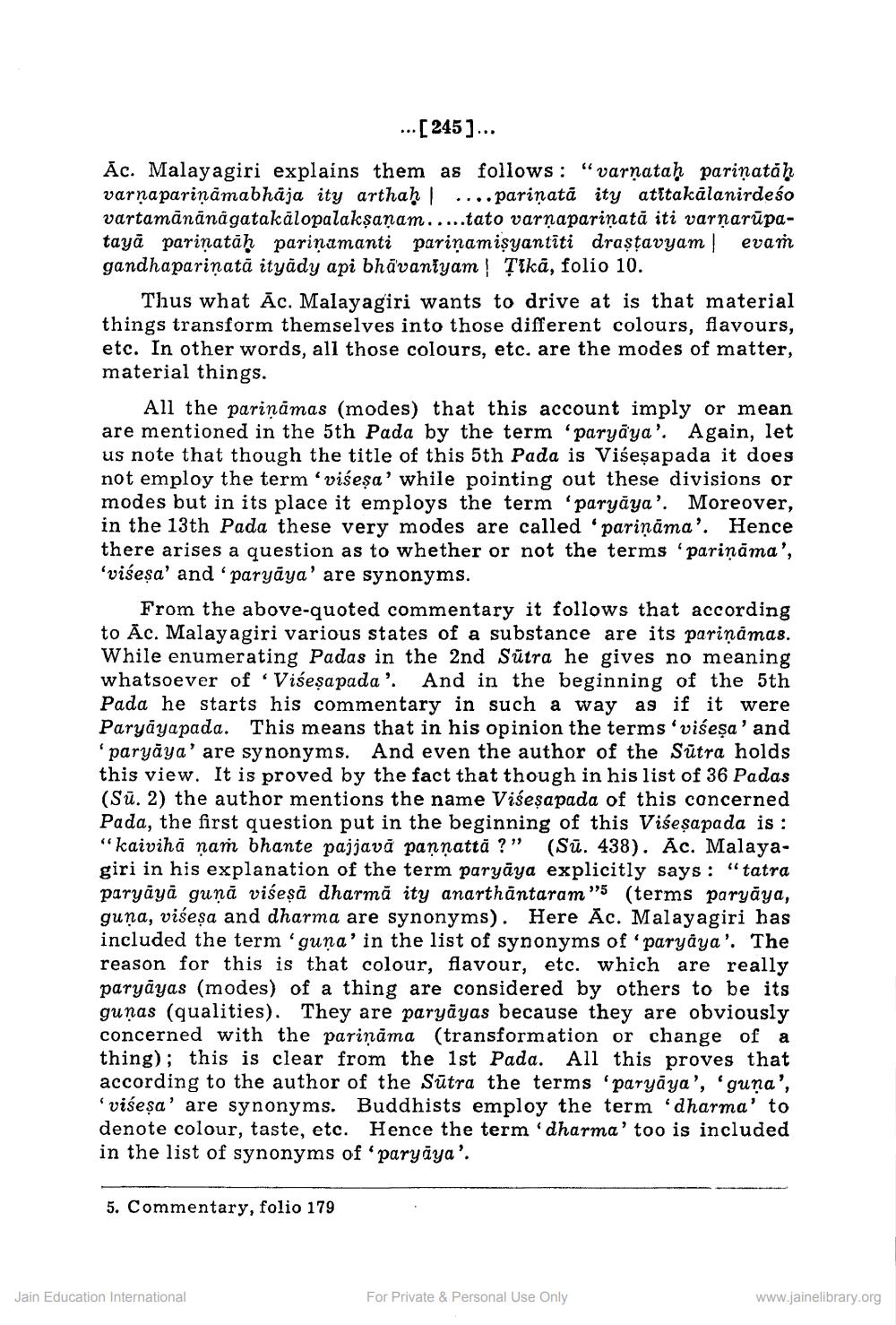________________
... [245]...
Ac. Malayagiri explains them as follows: "varnatah parinatan varnapariņāmabhāja ity arthah .... pariņatā ity atîtakālanirdeso vartamānānågatakalopalaksanam.....tato varņaparinatā iti varnarūpatayā parinatāh pariņamanti pariņamisyantiti drastavyam evan gandhaparinata itgadg api bhabangam | Tikā, folio 10.
Thus what Ac. Malayagiri wants to drive at is that material things transform themselves into those different colours, flavours, etc. In other words, all those colours, etc. are the modes of matter, material things.
All the pariņāmas (modes) that this account imply or mean are mentioned in the 5th Pada by the term 'paryāya'. Again, let us note that though the title of this 5th Pada is Visesapada it does not employ the term 'višeşa' while pointing out these divisions or modes but in its place it employs the term 'paryāya'. Moreover, in the 13th Pada these very modes are called 'pariņāma'. Hence there arises a question as to whether or not the terms 'pariņāma', 'visesa' and 'paryāya' are synonyms.
From the above-quoted commentary it follows that according to Āc. Malayagiri various states of a substance are its pariņāmas. While enumerating Padas in the 2nd Sūtra he gives no meaning whatsoever of Višeşapada'. And in the beginning of the 5th Pada he starts his commentary in such a way as if it were Paryayapada. This means that in his opinion the terms 'višeşa' and 'paryāya' are synonyms. And even the author of the Sutra holds this view. It is proved by the fact that though in his list of 36 Padas (Sū. 2) the author mentions the name Visesapada of this concerned Pada, the first question put in the beginning of this Višeşapada is : "kaivihã nam bhante pajjavá pannattā ?" (Sü. 438). Ac. Malayagiri in his explanation of the term paryaya explicitly says: "tatra paryāyā gunā višeșă dharmă ity anarthāntaram" (terms paryāya, guna, višesa and dharma are synonyms). Here Ac. Malayagiri has included the term 'guna' in the list of synonyms of paryaya'. The reason for this is that colour, flavour, etc. which are really paryāyas (modes) of a thing are considered by others to be its gunas (qualities). They are paryāyas because they are obviously concerned with the pariņāma (transformation or change of a thing); this is clear from the 1st Pada. All this proves that according to the author of the Sūtra the terms paryāya', 'guna',
višeşa' are synonyms. Buddhists employ the term 'dharma' to denote colour, taste, etc. Hence the term 'dharma' too is included in the list of synonyms of paryāya'.
5. Commentary, folio 179
Jain Education International
For Private & Personal Use Only
www.jainelibrary.org




